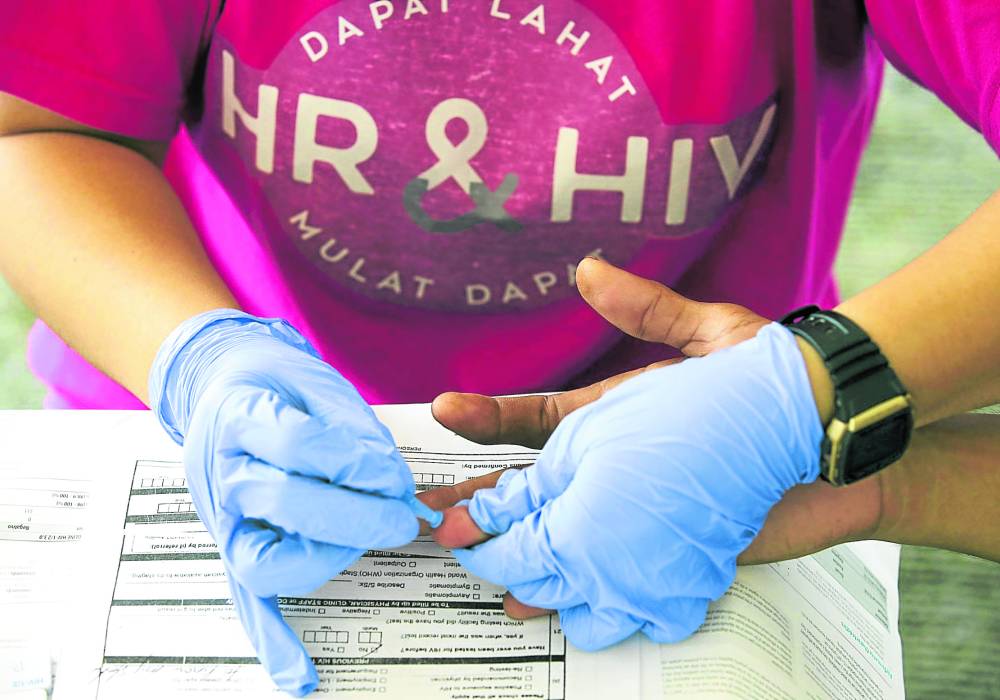DOH seeks emergency declaration on HIV surge

The Department of Health (DOH) has urged President Marcos to declare human immunodeficiency virus (HIV) a national public health emergency due to a surge in new cases in the country, especially among younger Filipinos.
In a video statement on Tuesday, Health Secretary Teodoro Herbosa warned that the current “bigger” problem in the country was not mpox (previously known as monkeypox), but HIV. Almost all of the mpox fatalities in the country died not by mpox itself, but due to complications caused by advanced HIV.
From January to March this year, the DOH recorded 5,101 newly diagnosed people living with HIV (PLHIV) in the country.
The youngest, Herbosa said, was a 12-year-old from Palawan province, who was found to be engaging in unprotected sex at an early age.
This means that 57 new HIV cases are being recorded by the DOH every day, giving the Philippines the distinction of having the fastest growing number of PLHIV in the Western Pacific region.
The average new HIV cases recorded per day have been increasing every year. From 13 new cases in 2013, this surged by 338 percent to 57 new cases per day in 12 years.
“With a national public health emergency for HIV, every sector in the society will help to address this. The whole of society, the whole of government can help us in this campaign to reduce the number of new HIV cases,” Herbosa said.
The last time a national public health emergency was raised was in March 2020 during the onset of the COVID-19 pandemic, which was lifted more than three years later in July 2023.
Under Republic Act No. 11332, the President can declare a state of public health emergency and mobilize government and other agencies to respond to the threat.
Getting younger
“What is concerning about the country’s HIV situation is that many of our new cases are young Filipinos. There is a 500-percent increase in our HIV cases belonging to age 15 to 25,” Herbosa said.
The DOH’s HIV and AIDS (acquired immune deficiency syndrome) surveillance showed that Filipinos who are newly diagnosed with HIV are getting younger through the years.
“The predominant age group [shifted] from among 35-49 years old in 2002 to 2005, to 25-34 years old starting 2006. Among age groups, the highest increase in the proportion of cases in the past five years were among those below 15 years old (up by 133 percent), followed by those aged 15-24 … (increasing by 106 percent),” the DOH noted.
The DOH was also alarmed by the increasing number of PLHIVs with advanced HIV disease (AHD), making them at higher risk of death even after starting medications.
Of the recorded cases for this quarter, 1,122 (22 percent) already have AHD by the time of their diagnosis, which is 12 percent higher than the same reporting period last year.
There are now 148,831 total reported HIV cases in the country from January 1984 to March 2025, according to the DOH data.
‘Fastest growing’
Sexual contact remains the predominant mode of transmission, but has shifted to largely being among males having sex with males since 2007.
While the country has still one of the lowest HIV/AIDS infection rates in the world, local and international health authorities noted that the Philippines is experiencing the “fastest growing HIV epidemic” in the Western Pacific region.
By the end of December 2025, this figure is projected to increase by 76 percent, with PLHIVs in the country estimated to be 252,800.
Herbosa, however, warned the number of PLHIVs in the country could breach 400,000 cases by the end of 2030 should there be no improvement in the services for HIV/AIDS prevention in general and PLHIV support in particular.
Herbosa urged people who are engaged in sexual activities to protect themselves from contracting HIV by practicing safe sex, and regularly undergoing HIV testing, which can be accessed for free in primary care facilities, local clinics, health centers, and mobile testing units.
Correctly taking oral Pre-Exposure Prophylaxis has also been shown to be highly effective in preventing HIV infection, particularly for those at higher risk, such as individuals with multiple sexual partners.





















